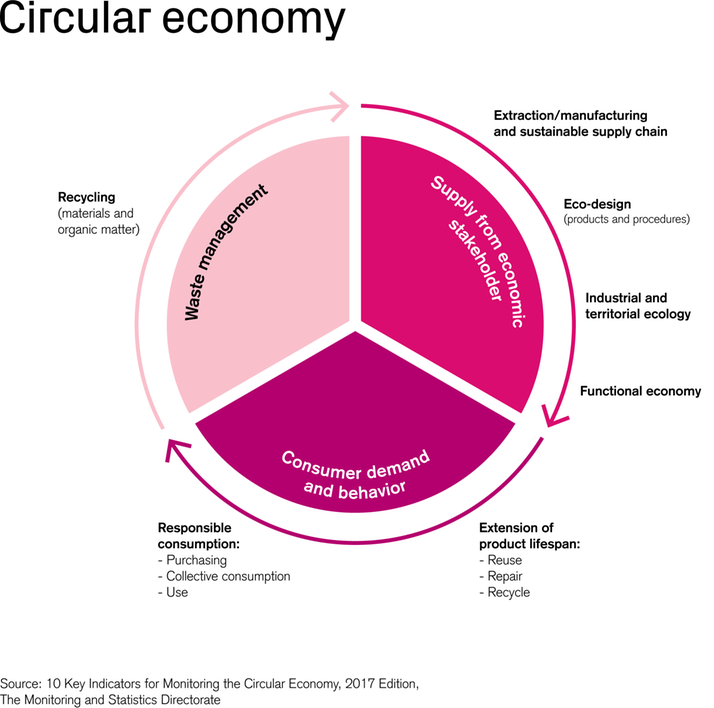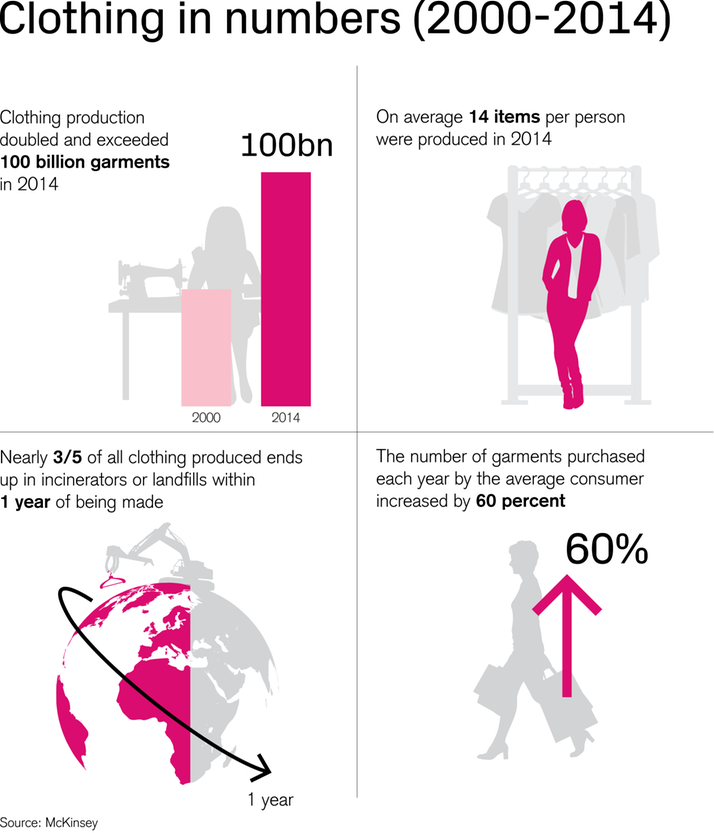Written by: Credit Suisse | Credit Suisse
The throwaway culture has penetrated many – if not all – industries. Fashion has been particularly prone to it, developing so-called "fast fashion" with a devastating environmental impact. Today, more and more people are trying to reverse this trend by applying a zero-waste philosophy and participating in a circular economy.
It's a fact that fashion is a highly polluting industry, for example the production of one t-shirt uses 2,000 liters of water and the water footprint of a single pair of jeans is nearly 7,000 liters. Fast fashion has an even worse environmental impact, thriving on low-cost production and fueled by the throwaway culture and a single-use approach. The massive overproduction adds to climate change and the consumption model of buy-throw away-repeat is simply not sustainable. Both environment-conscious producers and consumers are setting new trends to counter this.
Shared responsibility
Whether we like it or not, with new clothes comes responsibility. It is us – the consumers – who decide which garments get sold, how long they are in use, how they are re-used and recycled, or if they end their life in landfill too soon.
Slow fashion, clothes swapping, and second-hand shops are just a few examples of how creative consumers can be and prove they are ready to take responsibility. However, before new collections hit the shops, it is also up to the producers to do their bit.
Javier Goyeneche, founder of fashion company Ecoalf, set up his business with the goal of being sustainable. In his own words: "Anybody can do a jacket or jeans now. The 'how' is very important. I think business with a purpose is about that: I am doing the same things as others, but in a different way. That's what makes the difference."
Circular economy model
It took Javier a good few years to develop the "how." After trying out several options, he managed to develop quality fabric with plastic waste collected from the ocean. This achieves two goals: The ocean gets cleaner and the waste is turned into a new product. This is the circular economy in practice.
"Governments, consumers, and companies have a lot to do. They have to start using recycled materials and create the circular economy. There is no need to keep on digging deeper and deeper to get more petrol; we can transform waste using the circular economy approach."

Principles of the circular economy
The clue is in the name – the circular economy aims to re-invent and re-use produce to reduce waste and pollution to a minimum, and to prevent the linear approach of take-make-dispose. What in the traditional model is waste becomes a resource in the circular model.
The three principles of the circular economy set by the Ellen MacArthur Foundation, is becoming the manifesto of sustainable entrepreneurs:
- Design out waste and pollution,
- Keep products and materials in use,
- Regenerate natural systems.


